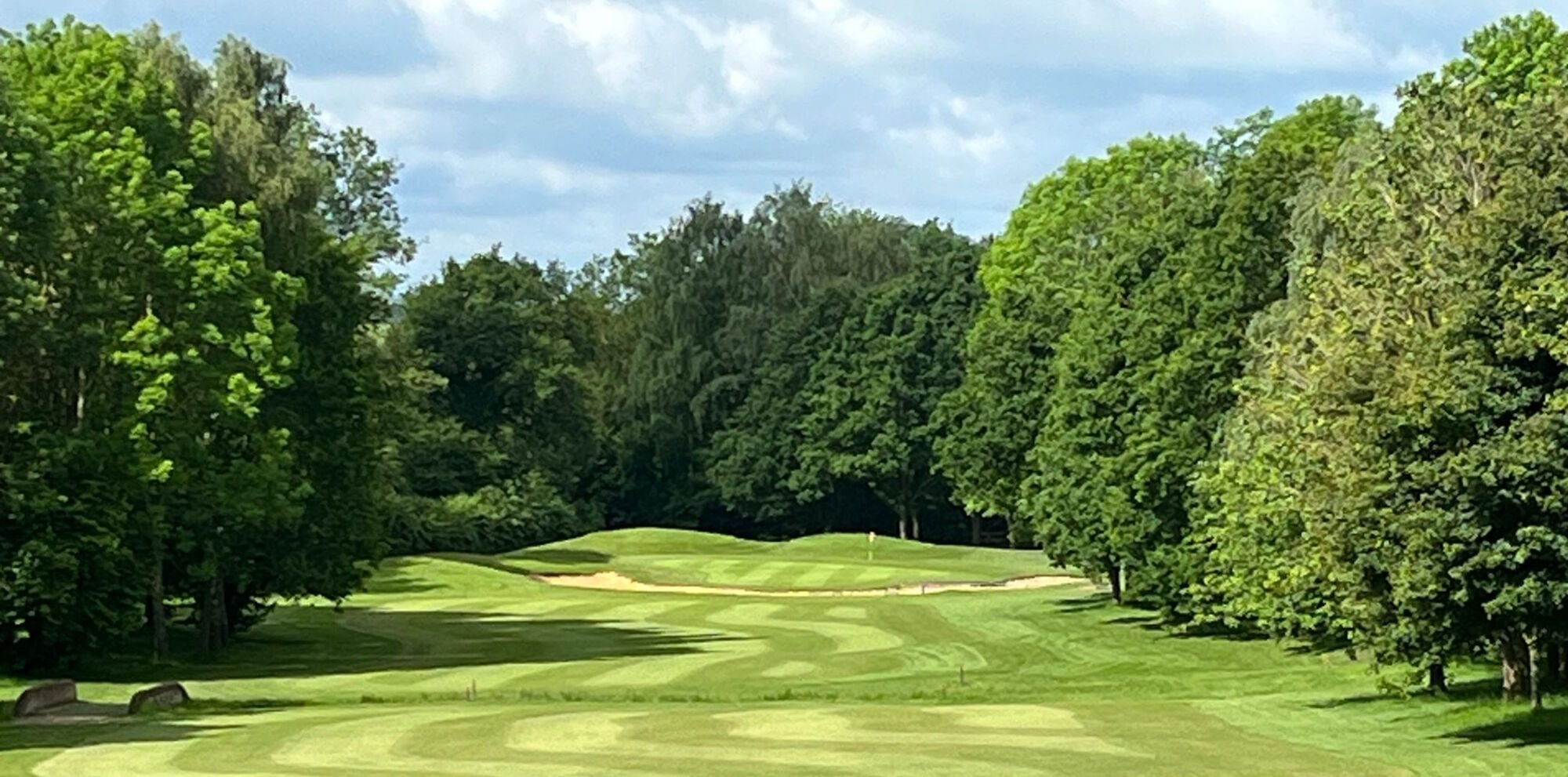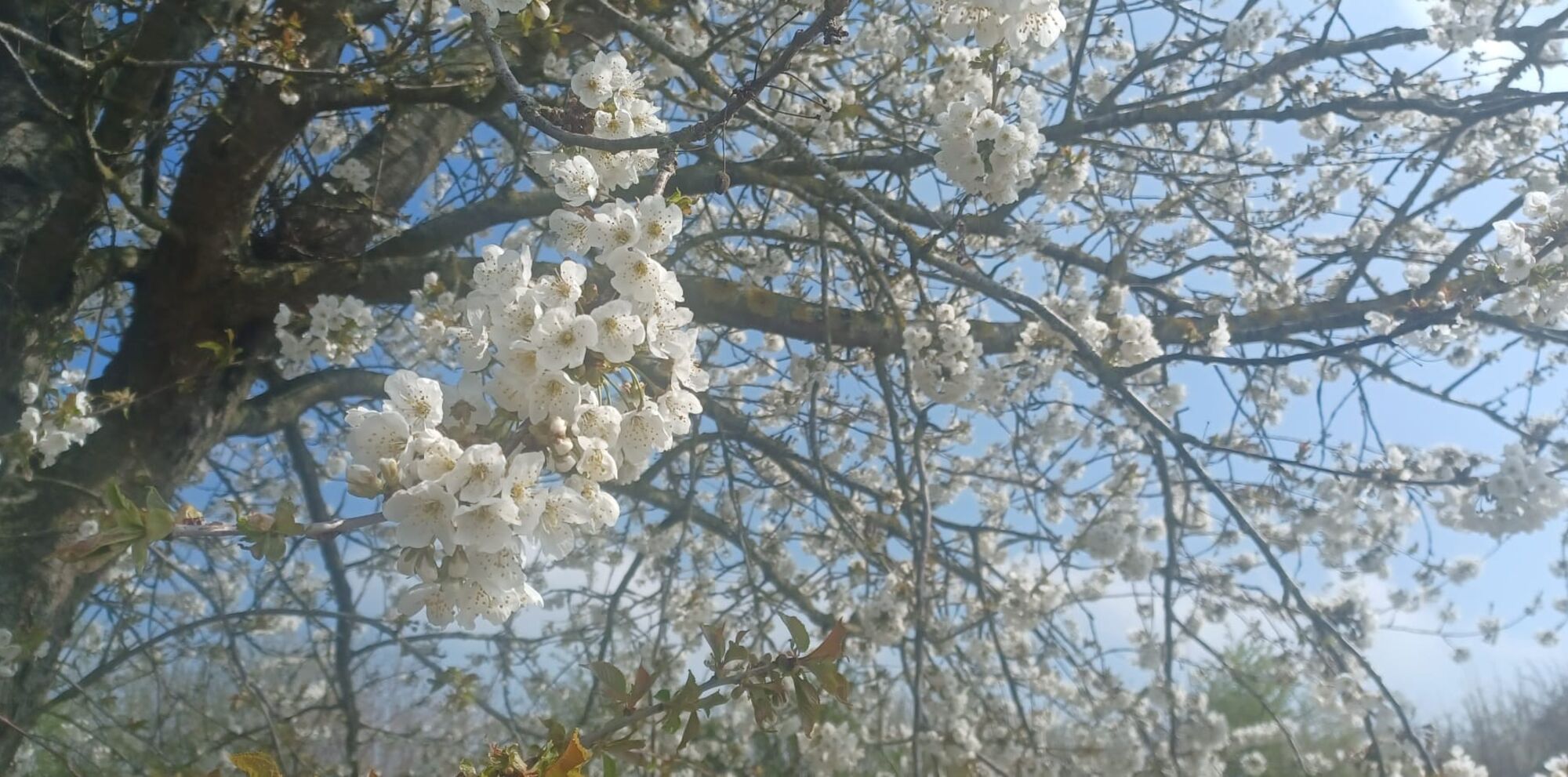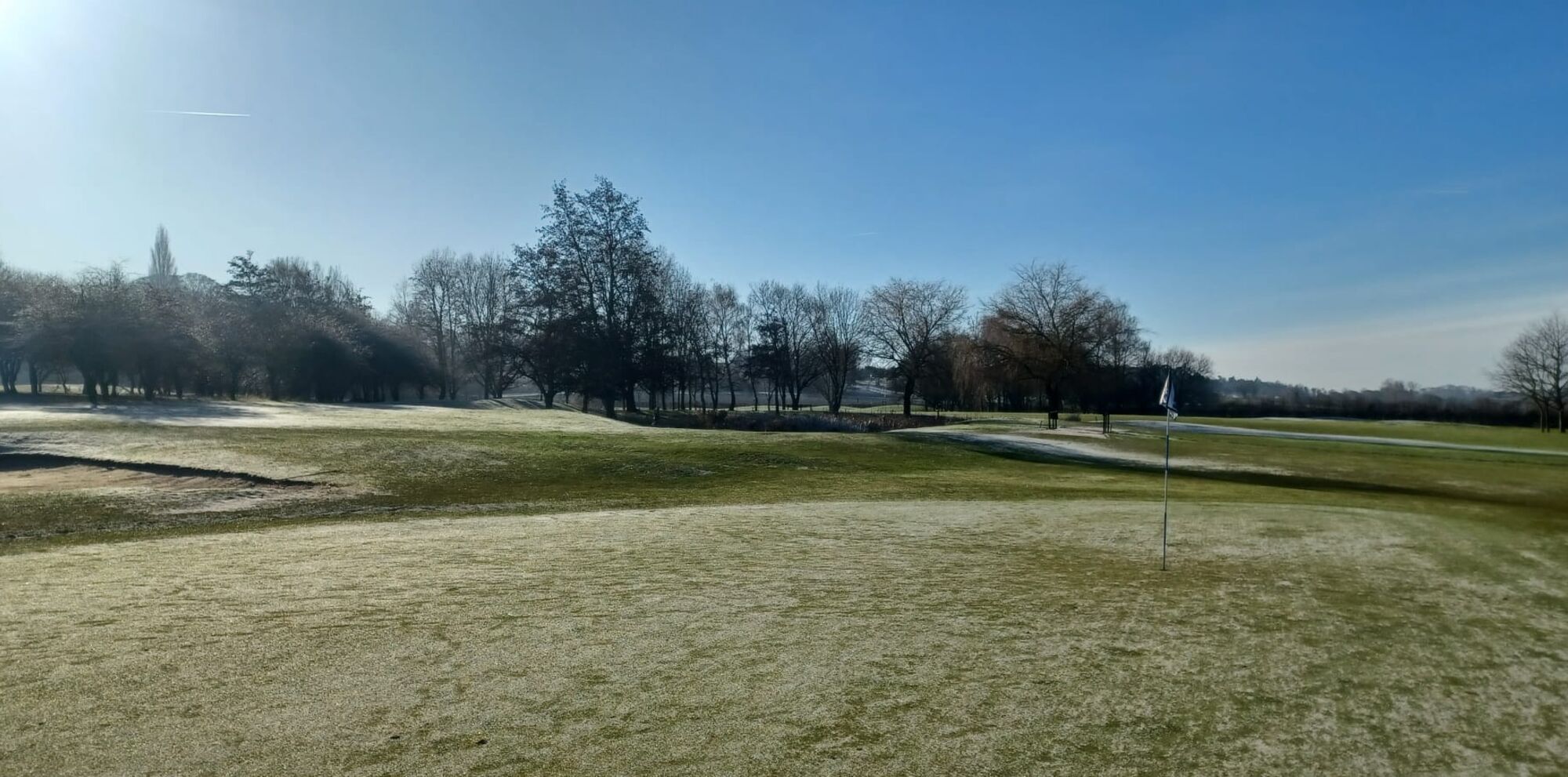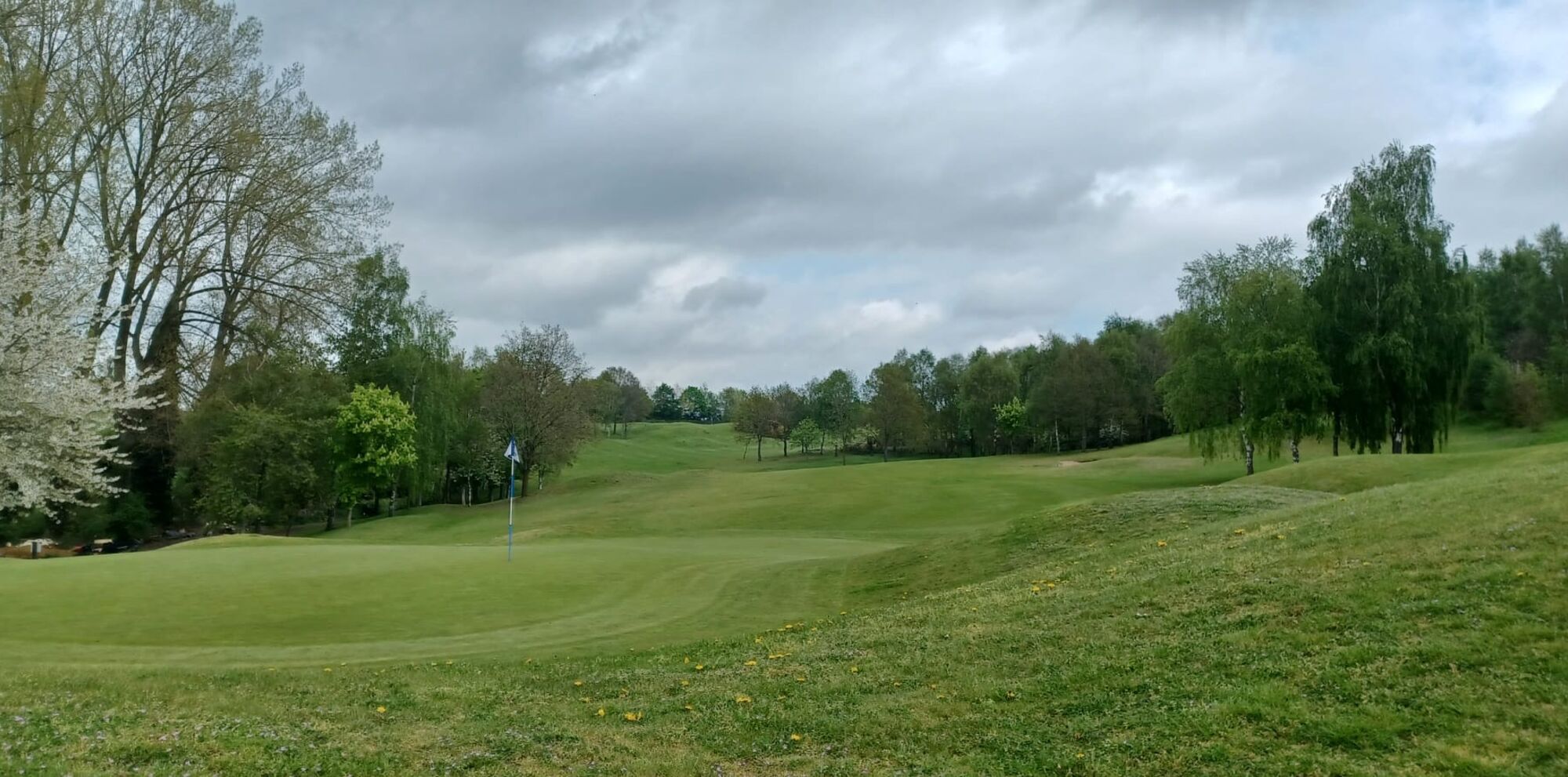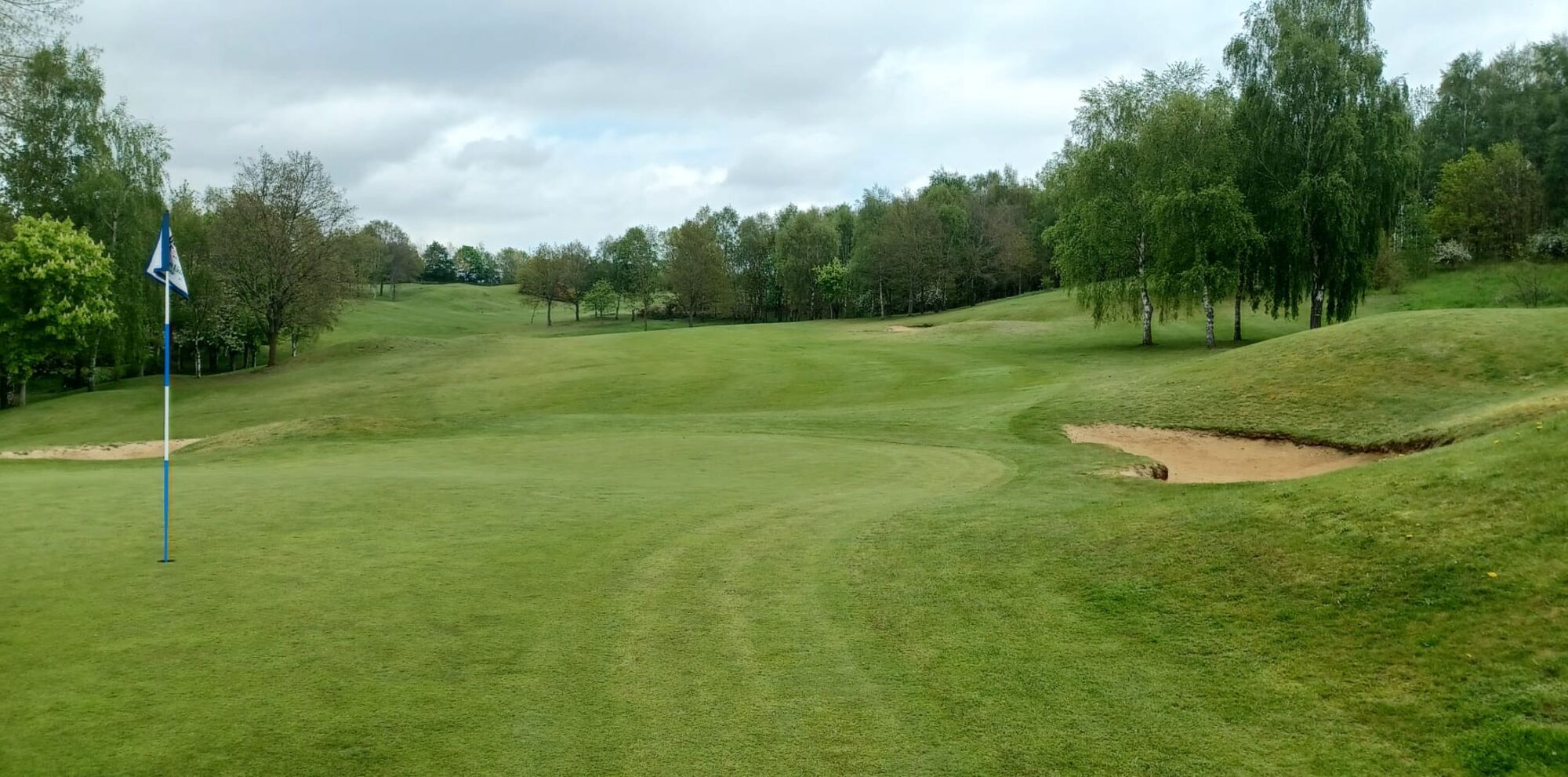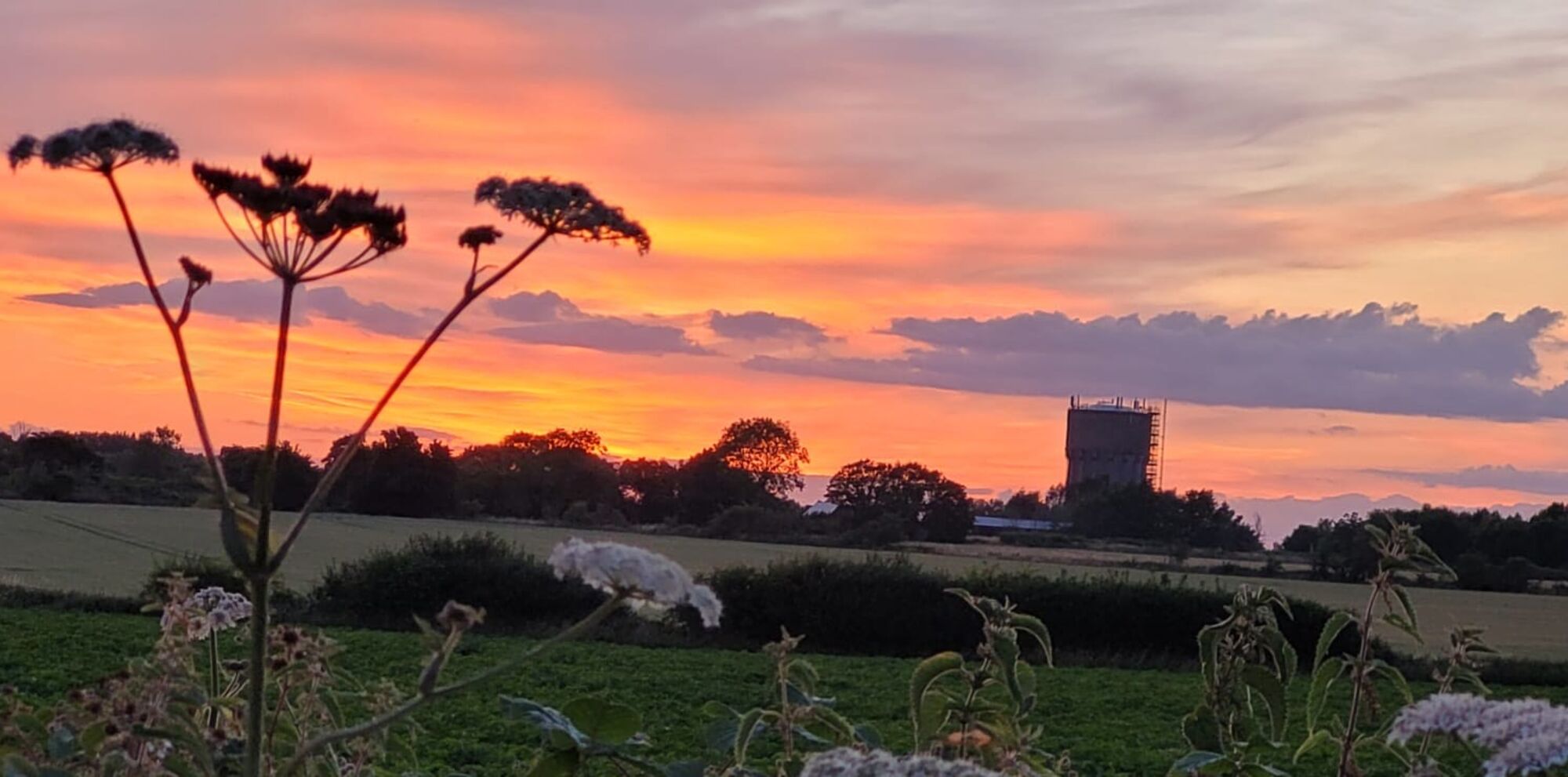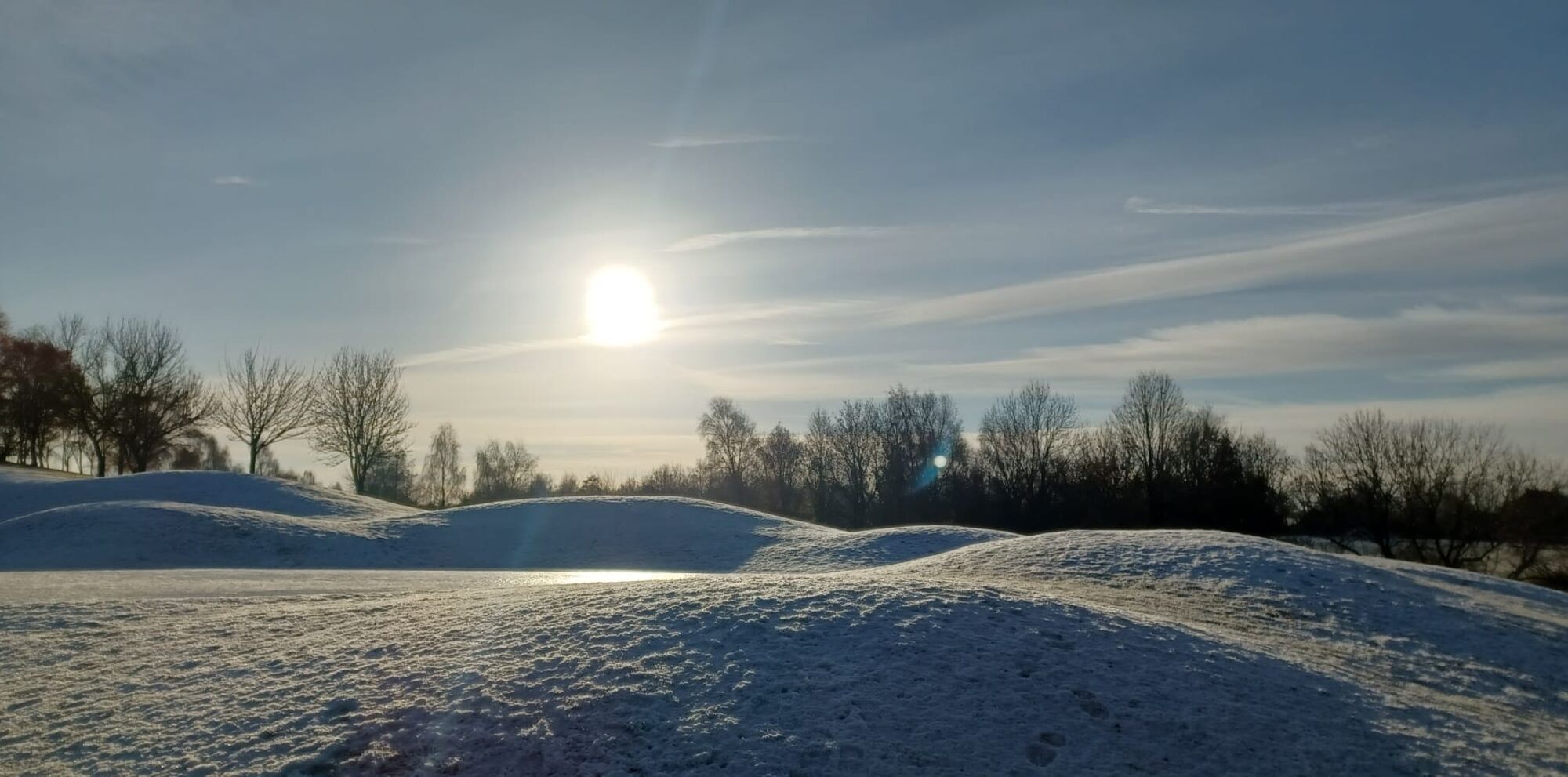Course Status
- Course Open 10/12/25 - Carry if you can / trolleys allowed Updated: 9th Dec 2025
Local Rules
1: Out of Bounds (Rule 18.2)
White posts or posts with white tops - Out of bounds is defined by the line between the course-side points, at ground level, of the posts. Posts which define OOB must not be removed and no free relief from them is available.
Hedges - Where hedges bound the course, OOB is defined by the line between the course-side points at ground level of the trunks or protective sleeving of the plants that form the hedge.
A ball coming to rest on or beyond the road to the left of the 14th and 16th holes is OOB, even if it comes to rest on another part of the course which is in bounds for other holes.
When playing the 5 th hole a ball is OOB if it comes to rest in, or to the left of, the drainage ditch that runs inside the left hedge.
2: Penalty Areas (Rule 17)
Definition: A penalty area is any body on the course (whether or not marked by the committee) including a sea, lake, pond, river, ditch, surface drainage ditch or other open water course (even if not containing water) and any other part of the course the committee defines as a penalty area by red or yellow marker posts. See rule 17 for relief options.
The edge of the penalty area is defined by the line between the outside points of the posts at ground level and the posts are inside the penalty area.
Penalty areas are defined by red posts or red/yellow capped posts.
If a boundary has not been defined by stakes it is defined by its natural boundaries - that is
where the ground slopes down to form the depression that can hold the water.
A ball is in a penalty area even if the area is improperly marked by the committee.
3: Status of Bridges over Penalty Areas
When a ball lies in a penalty area and a bridge interferes with his swing or stance, the player is NOT entitled to free relief. (Rule 16.1a)
The bridges around the 5 th hole all cross “open water course” penalty areas. A ball lying on a bridge on the 5 th hole is considered to be lying in the penalty area if it lies within the edge of the penalty area as defined in Local Rule 2, and no free relief is available.
The stone bridge on the 11 th hole does not cross an open water course, therefore none of the bridge is considered to be within the penalty area. A ball lying anywhere on the bridge is considered to be lying in the General Area and free relief is available under rule 16.1a
4: Status of Putting Green When Temporary Putting Green Is Used
When a temporary putting green is in play on any hole, the putting green that has been replaced is a wrong green and free relief for interference must be taken under Rule 13.1f.
5: Status of Practice Putting Green or Temporary Putting Green
All temporary greens when cut are to be treated as a wrong green even when not in use and relief must be taken under Rule 13.1f.
6: Preferred Lies (only relevant if a general notice has been posted indicating that preferred lies are in operation)
When a player's ball lies in a part of the general area cut to fairway height or less, the player may take free relief once by placing the original ball or another ball in and playing it from this relief area:
Reference Point: Spot of the original ball.
Size of Relief Area Measured from Reference Point: 6 inches from the reference point, but with these limits…
Must not be nearer the hole than the reference point, and
Must be in the general area.
In proceeding under this Local Rule, the player must choose a spot to place the ball and use the procedures for replacing a ball under Rule 14.2
When a player’s ball lies anywhere in the general area of the course on grass that has been mown, the ball may be lifted, cleaned, and replaced without penalty.
The ball must be marked before lifting (see rule 14.1)
The Ball must be replaced on its original spot (see rule 14.2)
7: Relief from Aeration Holes
If a player’s ball lies in or touches an aeration hole:
(a) Ball in General Area. The player may take relief under Rule 16.1b. If the ball comes to rest in another aeration hole the player may take relief again under this Local Rule.
(b) Ball on Putting Green. The player may take relief under Rule 16.1d.
But interference does not exist if the aeration hole only interferes with the player’s stance or, on the putting green, on the player’s line of play.
8: No Play Zones / Staked Trees
Young trees which are staked or are protected by a sleeve around the trunk are no play zones.
If a player’s ball lies anywhere on the course other than in a penalty area and it lies on or touches such a tree, or such a tree interferes with the players stance or area of intended swing, the player must take relief under rule 16.1f.
If the ball lies in a penalty area, and interference to the players stance or area or intended
swing exists from such a tree, the player must take relief either with a penalty under rule 17.1
or with free relief under rule 17.1e(2)
9: Ball Deflected by Power Line
If it is known or virtually certain that a player’s ball hit a power line or tower or a wire or pole supporting a power line during the play of holes 1,7,8,13, the stroke does not count. The player must play a ball without penalty from where the previous stroke was made (see Rule 14.6 for what to do).
10: Abnormal Course Conditions (Rule 16)
Ground Under Repair is defined by any area encircled by a blue line. The player can take relief under rule 16.1b
Newly renovated areas around ponds or bunkers marked by a blue line are GUR but the hazard or penalty area itself (ie sand or water), unless marked otherwise, are not and the ball is to be played or penalty taken as normal.
Areas in bunkers where sand has been removed by the movement of water resulting in deep furrows through the sand are Ground Under Repair. The player can take relief under rule 16.1c
11: Immovable Obstructions (incl. those close to Putting Greens (i.e. fixed sprinkler heads)
Relief from interference by an immovable obstruction may be taken under Rule 16.1.
The player also has these extra options to take relief when such immovable obstructions are close to the putting green and on the line of play:
Ball in General Area. The player may take relief under Rule 16.1b if an immovable obstruction is on the line of play, and is:
Within two club-lengths of the putting green, and
Within two club-lengths of the ball.
Exception - No Relief If Line of Play Clearly Unreasonable. There is no relief under this Local Rule if the player chooses a line of play that is clearly unreasonable.
12: Objects defined by committee to be immovable obstructions
All Rake rests, posts linked by rope and white hoops protecting areas of the course are to be treated as immovable obstructions from which free relief is allowed under rule 16.1 (see section 11 above)
Relief is not to be taken under rule 15.2 ie these items must not be lifted or removed. penalty for breach of this rule: loss of hole in match play or 2 shot penalty in stroke play.
13: Fence behind 13th green
The fence behind the 13th green is an immovable obstruction and free relief under Rule 16.1 is available if the net interferes with your area of intended swing or your stance. You do not get free relief if the net merely interferes with your intended ball flight.
NB there is no free relief from the hedge.
There is no relief from the fence under this Local Rule if it is clearly unreasonable to make a stroke at your ball. E.g. if the hedge itself prevents you from making a stroke.
Your reference point is the nearest position where the fence does not interfere with your swing or stance.
Your ball must be dropped within 1 club length of this point, not closer to the hole….you cannot drop “as far back away from the fence as you like” in order to be able to play over the fence.
14: Damage by Animals
In the general area, relief from animal holes is allowed under Rule 16.1b.
Definition of ‘animal hole’: Any hole dug in the ground by an animal, except for holes dug by animals that are also defined as loose impediments (such as worms or insects).
The term animal hole includes:
The loose material the animal has dug out of the hole
Any worn-down track or trail leading into the hole, and
Any area on the ground pushed up or altered as a result of the animal digging the hole
underground.
15: Animal Dung
At the player’s option, Goose dung may be treated either as:
A loose impediment that may be removed under Rule 15.1, or
Ground under repair from which relief is allowed under Rule 16.1.
If dung is found on the putting green, the player may also remove it from the line of play. If doing so improves the line of play or other conditions affecting the stroke, there is no penalty under Rule 8.1a.
16: All Roads and Paths Treated as Obstructions
All roads and paths in the General Area, even if not artificially-surfaced, are treated as immovable obstructions from which free relief is allowed under Rule 16.1.
Unless otherwise noted, the penalty for breach of a Local Rule is the General Penalty.


